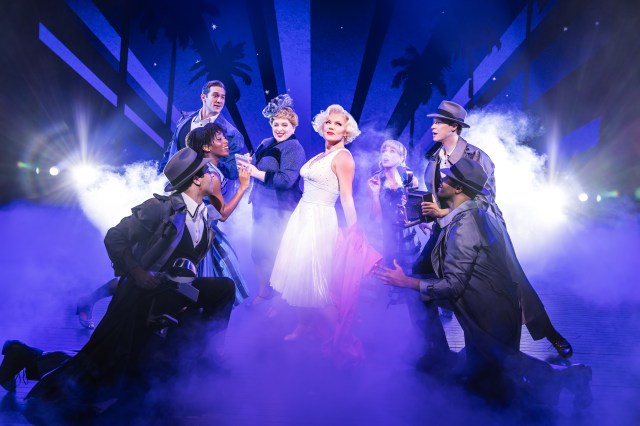
(© Carol Rosegg)
Lauren Yee’s The Hatmaker’s Wife is a surreal yet realistic tale following two very different couples who live in one personality-filled house years apart from each other. As the touchingly funny play develops, the couples at its center are revealed to have more mysterious connections between them than just a home in the suburbs, keeping the audience’s rapt interest as the plot unfolds its delightfully crafted twists.
The young partnership between Gabe and his steely girlfriend exists in sharp contrast to the decades-long marriage of Hetchman, the hatmaker of the title, and his long-suffering wife (played by the knockout duo of David Margulies and Marcia Jean Kurtz). The wall explains that this sad and hilarious, old and vaguely Polish couple lived their simple but loveless lives in that house many years before. Margulies and Kurtz, who appear in flashback scenes, are incredible actors with the ability to breathe life into characters that could easily become flat stereotypes. Together with their wise and endearing next-door neighbor Meckel (the bewitching Peter Friedman), this half of the company creates the enchanting and slightly magical world of the recent past in which their nearly tragic tale develops.
Their stories are safe in the adept hands of director Rachel Chavkin, who most recently directed the off-Broadway hit Natasha, Pierre & the Great Comet of 1812, where she proved her ability to corral a complicated narrative (War and Peace) into a digestible story. She infuses this play with personality and tenderness while maintaining enough perspective to allow the occasionally silly (in the best way) play to laugh at itself. Many of the most touching and joyous moments come at the hands of Chavkin’s excellent design team, who steps out of the box to create unique effects including Ryan Rumery’s sound design, which noticeably heightens the play’s realistic qualities, with effects that come out of the blue to add both humor and reality — like the cawing of a seagull that Meckel shoos away from his wife’s grave. Rumery’s design and original music, when combined with Amith Chandrashaker’s lighting choices, add to the play’s whimsical qualities. Nowhere is this exceptional pairing more evident than in the scenes shared by Hetchman and his beloved hat. Each time the hatmaker places the hat on his head, he is clearly enveloped with a shining, chiming joy that can (literally) be both seen and heard.
What makes The Hatmaker’s Wife a success is its dexterity and fluidity. Yee’s characters and story lines jump back and forth not only between the realistic and the fantastical but also between gut-laughter funny and hit-you-in-the-gut sad — and they do so with astounding truthfulness. The play floats its viewers to shimmering highs and crashes them to devastating lows, never allowing them to feel the slightest bit out of control. Each time the story comes to the edge of becoming too serious, harsh, or silly, its great big heart steps in and loves the audience right back down to the ground. As Sondheim would say, the story of the hatmaker and his wife ultimately “makes a hat where there never was a hat.”









